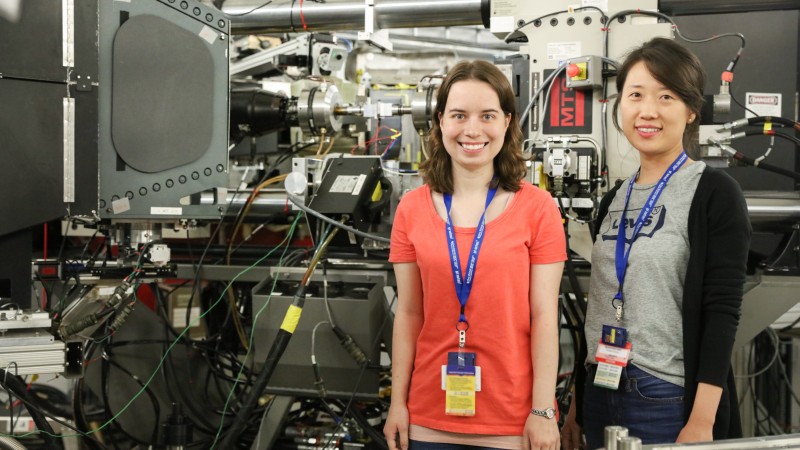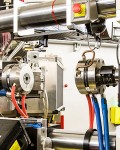What if the energy we expend walking could be harnessed to charge our electronic devices? That’s just one example among many in an exciting field of research that focuses on powering technology by harvesting untapped mechanical forces we take for granted.
Princeton University researchers are exploring new possibilities using neutron scattering at the Department of Energy’s (DOE’s) Oak Ridge National Laboratory (ORNL). Postdoctoral researcher SeungYeon (Sally) Kang and graduate student Juliane Preimesberger are part of a team led by professor Craig Arnold from Princeton’s Mechanical & Aerospace Engineering department. Their team is studying piezoelectrochemical effects, or PECs, a relatively new research area in which electricity is created from electrochemical potential variations via pressure or other mechanical deformations. Much in its nascent stages, a better understanding of PECs will provide significant insights into realizing new approaches to energy storage technologies and energy related applications.
“There’s a long way to go, but self-charging technology is kind of the dream of the mechanical energy harvesting research,” said Kang. “A few people are studying this PEC effect, but it’s very difficult right now because the current potentials that we’re able to get out of the material are lower than what we need them to be.”
Kang explains that modern piezoelectrics operate at high frequencies, but the kind of mechanical forces they’re interested in harvesting—walking, or human locomotion, for example—are only a few hertz. Finding a new type of material that can harvest energy at low frequencies is what they’re after.
For their experiment, the researchers used commercial, or “off-the-shelf” lithium ion batteries and introduced them to the VULCAN diffractometer at ORNL’s Spallation Neutron Source (SNS). Neutrons are particularly well suited for this study due to their high sensitivity to light elements such as lithium and their ability to pass through materials more deeply than x-rays.
“Our current hypothesis is that the mobile ions in these battery electrode materials are moving in and out of the structure because of applied stress,” said Preimesberger. “For example, graphite is a layered structure and is also one of the electrodes in the material we’re studying. We assume that as stress is applied, the ions between the graphite layers are forced out, which is what creates the electrochemical energy.
VULCAN’s unique design incorporates a load frame with two powerful mechanical arms that can exert up to about 10 metric tons of pressure on a material—about 6-times more powerful than the biteforce of the strongest crocodiles.
“This is a relatively new area of research, so some people are skeptical about the behavior we’re seeing,” said Kang, “‘Are you really moving ions in and out of the graphite? Is there really a structure change, or a change in composition?’ With VULCAN, we were able to identify structural changes and composition changes occurring in the system.”
The Princeton team plans to continue their research on VULCAN. While practical PEC-based applications such as micro sensors or wearable electronics are still a bit far out, each discovery gets us one step closer to realizing them, and in turn, fewer human steps that get taken for granted.
SNS is a DOE Office of Science User Facility. UT-Battelle LLC manages ORNL for the DOE Office of Science. The Office of Science is the single largest supporter of basic research in the physical sciences in the United States and is working to address some of the most pressing challenges of our time. For more information, please visit http://science.energy.gov/.—by Jeremy Rumsey







